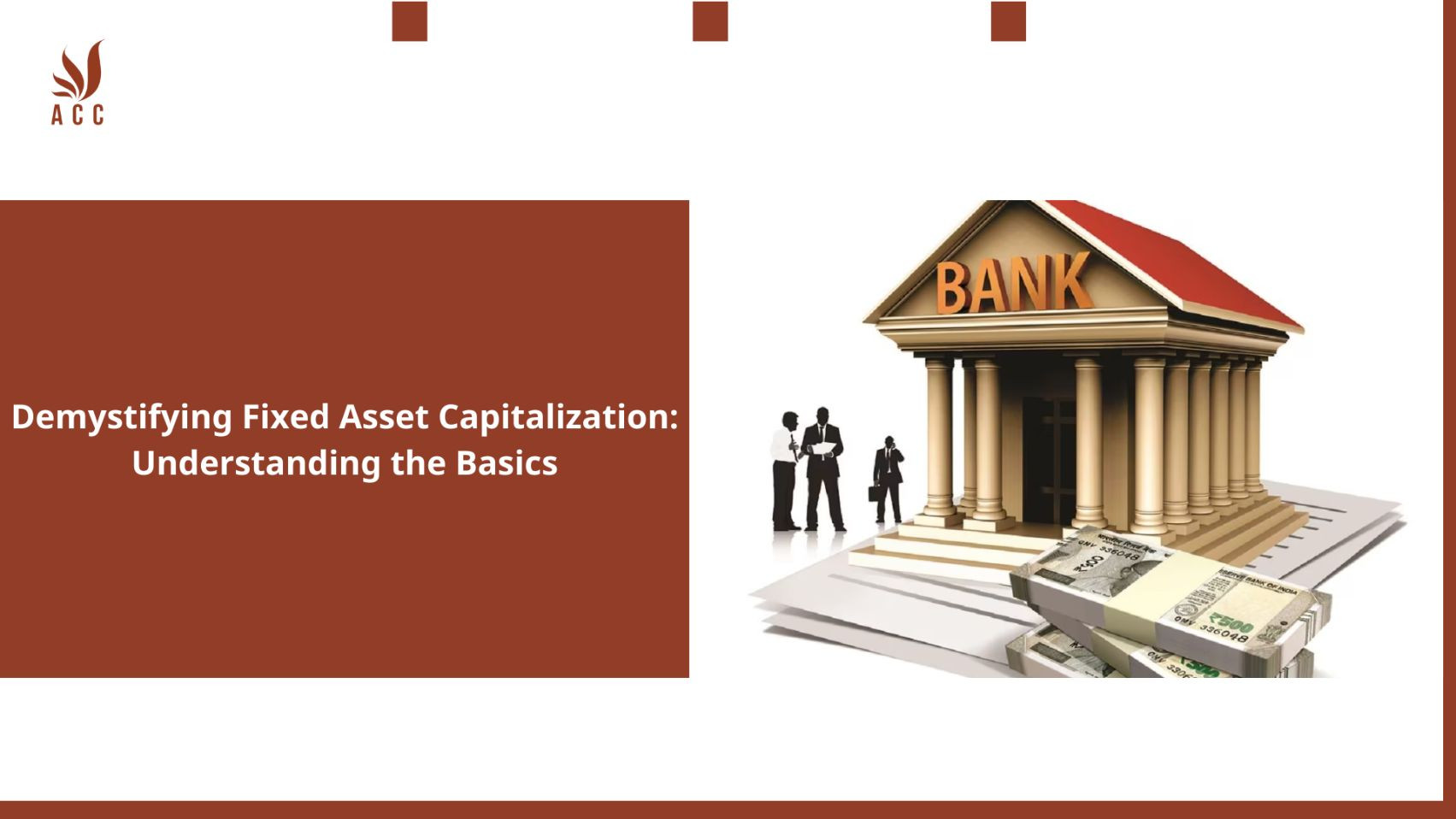
1. Demystifying Fixed Asset Capitalization: Understanding the Basics
All businesses have one fundamental thing in common: every single transaction that takes place has to be recorded and communicated to the stakeholders. Every time a business does something, some combination of assets, liabilities, or equity is adjusted such that the formula is still balanced. This article will discuss the fact patterns requiring accountants to say “this item our business gave up something for is an asset.”
2. What is Capitalization in Accounting?
Accounting heavily relies on the English language, and the terms used for different types of transactions all mean something intuitive. From Merriam Webster, to capitalize is “to take the chance to gain advantage from.”
From an accounting perspective, capitalization is the process by which the value of something is established as an asset, rather than as an expense. Assets are items businesses own, as opposed to expenses which are costs businesses pay for, but don’t own, such as services. Capitalization can occur up front, like when a business buys a car for cash, or it can occur incrementally as a business makes improvements, such as a building they own or lease which they enhance over time. In either case, the value of the asset is depreciated or amortized over its useful life.
3. The Difference Between Assets and Expenses
The difference between paying cash for an asset and paying cash for an expense is that when a business buys an asset, the asset is utilized by the company over time, whereas an expense is a cost incurred in the current period. Therefore assets will not decrease profit as an expense would. Cash is also an asset, so paying cash for an asset will simultaneously increase and decrease assets, and the rest of the accounting equation is unaffected.
Assets can be tangible (property, plant, and equipment), or intangible (goodwill, intellectual property, patents). Even further, tangible assets can either be fixed or leased assets. Fixed assets are assets a business pays for and thus has title to, and then disposes of or sells once it has served its business purpose. Leased assets behave like fixed assets, but the business does not have legal ownership of the asset during the lease term. Moreover, leased assets can be finance or operating in nature.
4. The Impact of ASC 842 on Lease Accounting
When it comes to accounting for leases under US GAAP, the fundamental change with ASC 842 is operating leases, previously just expensed when paid, now have to be capitalized. This accounting rule change occurred because, from a business perspective, both capital/finance and operating leases resulted in an organization accepting a financial commitment in exchange for the right to use an asset. However, the terms of the agreement dictate whether the organization is financing the purchase of an asset with a financing lease or paying for the use of an asset with an operating lease. Some of the conceptual differences in how leased assets are capitalized are discussed below.
5. How Assets are Capitalized
Capitalization is the act of recording a purchase as an asset on the balance sheet rather than recognizing the entire purchase as a one-time expense on the income statement. Fixed assets bought outright are capitalized when purchased by crediting the cash account to reduce it and debiting an asset account to increase it.
On an ongoing basis over the asset’s useful life, fixed assets are depreciated until they reach their salvage value. Each month, a depreciation expense (income statement account) is debited, and an accumulated depreciation (balance sheet account) is credited to reduce the asset value, representing the asset’s decline in value due to use and time.
For leases, the payment structures work differently. Lease payments are typically made each month from the lessee to the lessor over the full term of the lease. Leases are capitalized when the business first obtains the right to control or use a leased asset. This is done by crediting the lease liability account for an amount equal to the present value of all remaining lease payments and debiting an ROU asset account for a corresponding amount. The lessee’s right to use the underlying asset of the lease is capitalized as the ROU asset.
After establishing the value for the right to use the leased asset, it must be amortized or depreciated over the term the business will derive value from it, which is the shorter of either the lease term or the useful life of the asset except in certain situations. When the lessee elects to purchase the leased asset at the end of the term, the asset is depreciated over its useful life since it will become the lessee’s fixed asset.
Under ASC 842, ROU assets can either be finance assets or operating assets, and the accounting for each is slightly different. Find examples of each below.
6. Capitalized Right-of-Use Asset Example 1: Capital/Finance Lease
We will start with a capital/finance lease example because they have always been capitalized. Even under the previous ASC 840 framework, there have always been two types of leases – capital and operating. The key distinction before ASC 842 was that capital leases had characteristics of an owned asset, meaning the lessee has many of the same risks with a capital lease as they would have if they owned the asset outright.
When an entity enters a lease, they first have to determine whether it is a capital lease vs. an operating lease. Under ASC 840, this was done with four tests. If the answer to any of these questions was “yes,” then it was accounted for as a capital lease.
- Does the title/ownership transfer to the lessee at the end of the lease term? No
- Is there a bargain purchase option? No
- Is the lease term 75% or more of the remaining economic life of the asset? Yes – the lease term of four years is 80% of the useful life of five years
- Does the present value of the sum of the lease payments exceed 90% or more of the fair value of the underlying asset? No – The present value of 48 $1,000 payments made at the end of each month over four years with a 5% annual discount rate is $43,423, which is 79% of $55,000.
Result of the classification test: This is a capital/finance lease because it triggered the third test.
Fortunately, the rules for capital/finance lease accounting don’t change from ASC 840 to ASC 842. To appropriately capitalize and depreciate this lease, we need to get three distinct parts right:
- The capitalization journal entry at the beginning of the term
- The ongoing depreciation entries throughout the term
- The journal entry at the end of the term
7. Capitalized Right-of-Use Asset Example 2: Operating Lease
Operating leases are still distinct from finance leases under ASC 842. A key distinction between the two for accountants is that operating lease ROU assets do not have a separate depreciation expense. The lease liability and ROU asset are amortized in tandem by lease expense.
Assume the fact pattern for this example is the same as above, except for the following:
Last But Not Leased, Inc. (lessee) signs a lease for another truck.
The only difference between the two truck leases Last But Not Leased, Inc. entered into is the useful life of this truck is one year longer than the useful life of the truck from the first example – perhaps they got the diesel version this time. Because of this, the lease term is not over the majority of the truck’s useful life. Therefore, the answer to all five of our classification test questions will be NO, and the lease is operating.
To appropriately capitalize and amortize this lease, we still need to get the same three distinct parts right.
8. Summary
To capitalize is “to take the chance to gain something from.” Capitalization in accounting is the term used to describe the establishment of an asset. Many types of assets exist, including leased assets. Leased assets under ASC 842 can be accounted for in one of two ways, which have important distinctions and convey different information to investors.
The calculations required to capitalize leased assets can be complex to manage and track within Excel. A software solution such as LeaseQuery can do everything for you, including determining whether your lease is capital or operating, and all subsequent accounting under ASC 842.
9. Why should professionals use ACC Law Firm's capital Service?
-
Expertise in Legal Matters: ACC Law Firm specializes in legal services, providing professionals with access to experienced attorneys who can offer valuable legal guidance. Whether it's contract negotiations, intellectual property issues, employment matters, or any other legal concern, their expertise can be invaluable.
-
Tailored Legal Solutions: ACC Law Firm understands that every professional's needs are unique. They can customize their legal services to address the specific challenges and opportunities faced by professionals in different fields.
-
Risk Mitigation: Legal issues can pose significant risks to professionals and their businesses. ACC Law Firm can help identify and mitigate these risks, reducing the potential for costly legal disputes or compliance issues.
-
Resource Optimization: Professionals can save time and resources by outsourcing their legal needs to ACC Law Firm. This allows them to focus on their core competencies and business objectives, while leaving legal matters in the hands of professionals.
-
Access to a Network: ACC Law Firm may have a network of legal experts and professionals in various fields, which can be beneficial for clients seeking connections and advice beyond just legal services.
Q&A
Question 1: What is fixed asset capitalization?
Answer 1: Fixed asset capitalization is the accounting process of recording and recognizing the costs associated with acquiring, improving, or maintaining fixed assets, such as buildings, machinery, equipment, and land, as part of a company's balance sheet.
Question 2: Why is fixed asset capitalization important for businesses?
Answer 2: Fixed asset capitalization is essential for businesses because it allows them to accurately account for and track the value of their long-term assets over time. It helps in determining the asset's historical cost and assessing its depreciation or amortization.
Question 3: What costs are typically capitalized when dealing with fixed assets?
Answer 3: Costs that are typically capitalized when dealing with fixed assets include the purchase price, costs of transportation, installation, improvements, and any other expenses directly attributable to putting the asset into its intended use. These costs are added to the asset's historical cost.
Question 4: How does fixed asset capitalization impact financial statements and reporting?
Answer 4: Fixed asset capitalization affects financial statements by increasing the value of assets on the balance sheet, which, in turn, affects the calculation of depreciation expenses and, ultimately, the net income reported on the income statement. Proper capitalization is essential for accurate financial reporting and compliance with accounting standards.
Nội dung bài viết:






Bình luận